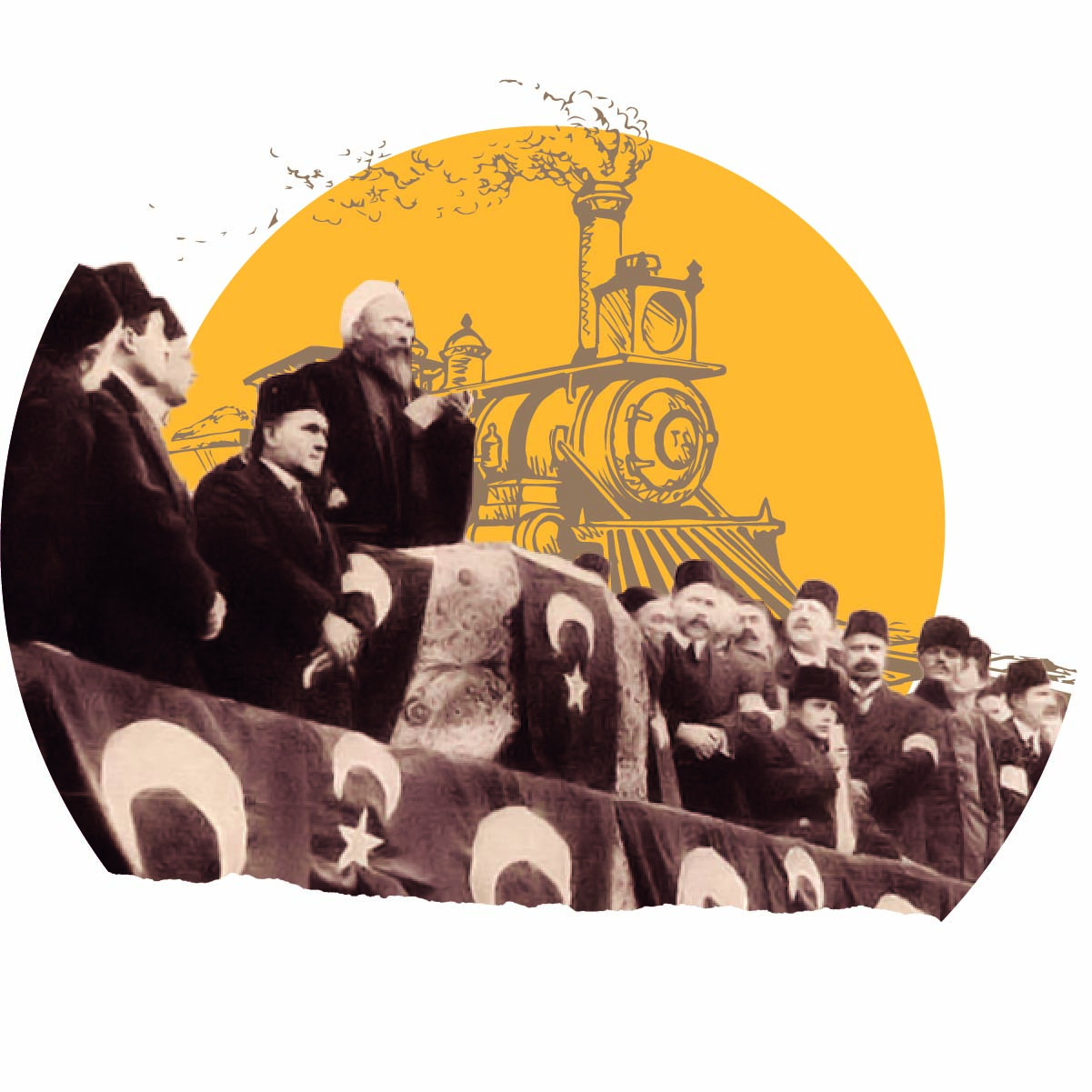
In a Sad Tragic Reality
The enslavement of Arabs ...
a long journey of injustice and humiliation
"The Ottoman Empire Era" ... a march of destruction and devastation against the Arabs.

The crime of “Safar Berlik” is one of those heinous crimes committed by the Ottomans, which inflicted physical and psychological harm on the Arab peoples. The psychological significance of the Arab people at the beginning of the twentieth century, suggests horror, misery, bad luck and sinister travel that is irreversible, as confirmed by the writings of historians who lived during that period. Mass displacement or unrequited labor are two dark sides that “Safar Berlik” refers to.
Some Arab regions went through bitter years as a result of “Safer Berlik” of the Turkish rule, until it became a long journey of suffering and humiliation. Injustice has grown worse, people became fed up with it, and scholars, writers, and authors have embarked on the defense of Arabs. Their writings were filled with clarification at times and hinting at other times, and they confronted the conspiracies, and revealed an aspect of this injustice.
The “Safar Berlik” incident was a purely Ottoman political scheme, to isolate Arab cities, including the city of the Prophet, where the Ottomans sought to strip its identity and make it one of the cities of the Ottoman Empire and a center where the Turkish character prevails. The (Hejaz Railway) that the Turks built to Medina was another path of torment and displacement, and it was only for purely political purposes.
The “Safar Berlik” incident has become a picture of tragedy, telling the painful scenes of thousands of families who were forcibly displaced from their homes. These are tales of injustice witnessed by the city halls and other Arab cities. It is rebellion against the laws of the universe, life, and disrespect for noble values.
"Safar Berlik" intended to turn large numbers of displaced Arabs into slaves.

The Ottomans were an epidemic that afflicted the Arab nation in killing its tumor with an incurable disease, and it spread throughout the exhausted body, which was followed by calamities and horrors. Palestine, Syria and Baghdad were not far from the tragedies from which they had a great share of war and displacement. The Ottoman tyrants mobilized thousands of people from the Levant towards war in the countries of the Caucasus. They were starved and perished in cold weather, and suffered from remoteness, wounds, and pains, and what returned from them is nothing but few people. You can hardly find a house from the Levant without its grief due to the loss or distance of one of its sons.
It is reasonable for the historian to convince that the moment when the Ottoman Turks colonized the Arab world, it was the beginning of the accompaniment of torment by enslaving and killing people. The Ottomans were sadistic and thirsty for blood. They killed and tortured Arabs for no reason, and they killed commoners and boys who were not guilty. In four days, Selim I killed ten thousand people from the neighborhoods of one city in Egypt. As for plunder, it is part of their nature. The Ottoman army used to enter the homes of the Egyptians and steal everything in them, and sell women and children in the slave market. History books are full of dramatic events committed by the Ottomans in Egypt.
History contains black pages of the rule of the Turks from Ottomans. This history is full of slavery, terrorism and the most heinous crimes. The matter was not the result of specific political circumstances, or being confined to a specific period of time, but rather a ruling style that prevailed over the sultans and leaders of the Ottoman Turks. Some of them have been embedded in criminality and impulsivity in the shedding of Arab blood, as if that was a rooted principle in their policies against Arabs since the beginnings of the Turkish occupation of Arab lands. It seems like a march of destruction and devastation against the Arabs, so it has become a sad and tragic reality.


1. Muhammad Al-Sa`ed, Safar Berlik (Riyadh: Madarak, 2018).
2. Ibrahim Shaban, the Ottoman Empire … 6 centuries of terrorism, castration and harem, (Article in Sada Al-Balad newspaper, Saturday 7 September 2019).
3. Hassan Al-Dika, The State of Muhammad Ali and the West, Acquisition and Independence (Beirut: The Arab Cultural Center, 1997).
4. Talal Al-Tarifi, the Ottomans – This was not a lie (Riyadh: First Edition, 1441 AH / 2020 AD).
5. Muhammad Marawan, “Janissaries, the Strength and Weakness of the Ottoman State,” (Libya: The Scientific Journal of the College of Education, University of Misurata, Volume 2, Issue 8, June 2017).

